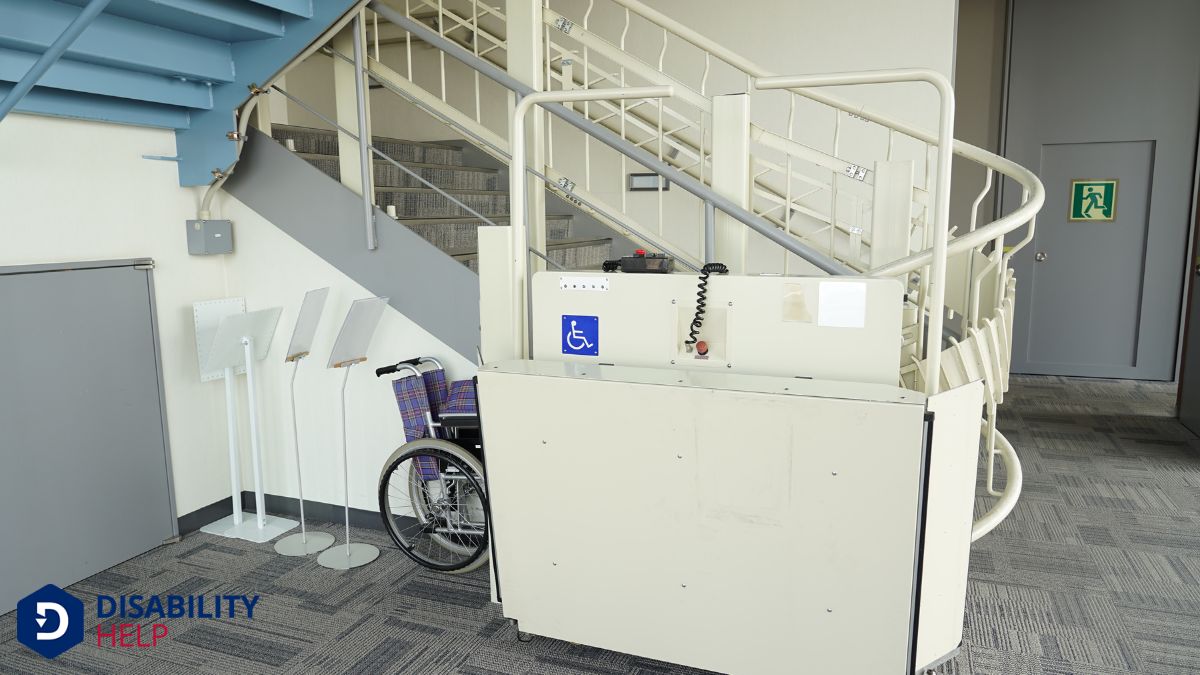When we're considering how much to invest in a stair lift, it's essential to weigh various factors, like the type of lift and installation complexity. Straight stair lifts tend to be more affordable than curved ones, but our specific needs will dictate the best choice. Installation costs can also vary, depending on our location and staircase design. Let's explore these elements and more to guarantee we're making a well-informed decision that aligns with our budget.
Key Takeaways
- Stair lift prices vary based on type; straight models are cheaper, while curved options are more expensive due to customization.
- Installation costs depend on staircase complexity, geographic location, and potential structural modifications or electrical upgrades.
- New stair lifts have a higher upfront cost but include full warranties and the latest features.
- Used stair lifts are budget-friendly but may have limited warranties and require careful evaluation for safety.
- Consider financing options like personal loans, in-house financing, or subsidies to manage the cost effectively.
Understanding the Types of Stair Lifts

When considering how to choose a stair lift, it's essential to understand the different types available to find the best fit for your needs.
We’ve got two main options: straight and curved stair lifts. Straight stair lifts work perfectly for staircases without any turns or landings. They’re often simpler and less expensive.
Curved stair lifts, on the other hand, are designed for stairs with corners or spirals. They’re customized to fit the unique shape of your staircase, which usually makes them pricier.
We should also think about outdoor stair lifts for exterior steps, ensuring they withstand weather conditions.
Additionally, standingThe legal right to bring a lawsuit, which requires that the individual bringing the suit has a direc... lifts are an option for those who prefer not to sit.
Evaluating the Complexity of Your Staircase
Let's assess our staircase's complexity by considering its length and shape, as these factors greatly impact installation.
We'll also need to identify any obstructions or clearance issues that could complicate the process.
Finally, let's not forget the importance of understanding the installation and permitting requirements specific to our home.
Staircase Length and Shape
Understanding the length and shape of your staircase is essential in evaluating its complexity for a stair lift installation. When we measure the staircase, we need to take into account how long it is and whether it's straight, curved, or spiral. Each shape presents unique challenges. A straight staircase generally requires a simpler installation, while curved or spiral staircases may demand custom solutions.
We also need to factor in the number of steps and any landings within the staircase. These elements can affect the type of stair lift track needed.
Obstructions and Clearance Issues
As we evaluate the complexity of your staircase for a stair lift installation, obstructions and clearance issues are critical factors to contemplate.
We need to identify any potential obstacles, such as handrails, low ceilings, or narrow steps, that might interfere with the stair lift’s path. It’s crucial to guarantee there’s sufficient space for the lift to move smoothly without hindrance.
We should also check if there are any fixtures or furniture near the staircase that could limit the necessary clearance.
Our focus is on maintaining safety and functionality. By addressing these issues early, we can prevent complications during installation and guarantee the stair lift operates efficiently.
Let’s assess these factors together to create a seamless and practical solution for your home.
Installation and Permitting Needs
When installing a stair lift, evaluating the complexity of your staircase is essential to guarantee a successful project.
We need to take into account various factors that might impact the installation process.
Let’s look at the aspects we should examine:
- Staircase Shape: Is it straight, curved, or does it have landings? Each shape presents its own challenges.
- Width and Length: Does the staircase provide enough space for the lift without obstructing the path?
- Material and Condition: Are the stairs made of wood, concrete, or another material? Evaluating their state guarantees safe installation.
- Electrical Access: Is there a power source nearby, or will additional wiring be necessary?
Understanding these elements helps us better plan and carry out a smooth installation process.
Considering New vs. Used Stair Lifts
Choosing between a new and a used stair lift can be a significant decision for anyone looking to enhance mobility in their home.
We’ll need to weigh several factors to make the best choice. New stair lifts come with the latest features, full warranties, and the peace of mind that everything is in top condition. However, they typically cost more upfront.
On the other hand, used stair lifts are budget-friendly, but they might show signs of wear and come with limited warranties. It’s important to verify their reliability and safety.
By evaluating our budget and the condition of available options, we can determine what best suits our needs.
Let’s carefully consider what'll provide the most value and safety.
Factoring in Installation Costs
When we consider the costs of installing a stair lift, we can't ignore professional installation fees, which guarantee everything is set up correctly and safely.
We also need to think about any structural modifications that might be necessary to fit the lift in our homes.
Additionally, let's not forget potential electrical system upgrades that could add to the overall expense.
Professional Installation Fees
Installing a stair lift is a significant investment, and we must consider professional installation fees as an essential part of the overall cost. These fees guarantee the job is done safely and efficiently by experienced technicians.
Let’s explore what influences these costs:
- Complexity of the Staircase: Curved or multi-level staircases require more expertise and time, leading to higher fees.
- Geographical Location: Installation costs vary based on local labor rates, with urban areas often being pricier.
- Time Required: The duration of the installation process affects the price, with longer jobs costing more.
- Company Policies: Different companies have varying pricing structures, some offering package deals that include installation.
Understanding these factors helps us anticipate the potential expenses involved in installing a stair lift.
Structural Modification Expenses
While installing a stair lift, we often overlook the structural modifications that might be necessary, which can considerably add to the total cost.
Let’s consider what these modifications might entail. Sometimes, we need to reinforce the staircase to support the weight of the lift and the user. Narrow stairs might require widening to safely accommodate the lift. If our staircase has turns or landings, we’ll need a custom track, which can increase costs.
Don’t forget about wall modifications, like removing parts of a banister or guaranteeing walls are sturdy enough to support the lift’s track.
Each home is unique, so it’s essential to assess these needs beforehand. By planning ahead, we can avoid unexpected expenses and guarantee a smooth installation process.
Electrical System Upgrades
Beyond structural considerations, we must also address the electrical system upgrades needed for a stair lift installation. Properly evaluating our current electrical setup guarantees that the stair lift functions safely and efficiently.
Let’s break down the key elements we should consider:
- Power Supply: We might need a dedicated circuit to handle the stair lift's power requirements.
- Wiring: Upgrading or installing new wiring could be necessary to support the additional load.
- Outlets: We’ll need to verify that there are accessible outlets near the stair lift's location.
- Backup Systems: Considering backup battery systems can ensure the lift operates during power outages.
These upgrades are essential for a seamless installation, and understanding them will help us budget effectively and avoid unexpected expenses.
Exploring Additional Features and Customizations
When considering a stair lift, it's crucial to explore the additional features and customizations that can enhance both safety and comfort.
We might look into swivel seats, which make getting on and off easier and safer. Adjustable seat heights can cater to individual needs, while foldable rails can save space when the lift isn't in use.
Remote controls are a handy feature, allowing us to call or send the lift where it’s needed. Safety sensors can stop the lift if any obstacles are detected, preventing accidents.
We can also consider the aesthetic aspects, like choosing from different upholstery colors and finishes to match our home's decor.
With these customizations, our stair lift becomes a seamless, personalized part of our living space.
Calculating Maintenance and Warranty Expenses
As we plan for a stair lift, it's vital to factor in the costs of maintenance and warranty to guarantee long-term reliability and peace of mind.
These expenses can vary, but they're important for avoiding unexpected repair costs and guaranteeing smooth operation. A stair lift's warranty and maintenance plan should cover key aspects, providing us with confidence in our investment.
Consider the following:
- Warranty Duration: Look for extensive warranties that span several years to confirm we’re covered.
- Maintenance Plans: Regular check-ups can prevent costly repairs, so consider plans offering routine service.
- Parts and Labor: Confirm what’s included in the warranty—replacement parts and labor should be covered.
- Exclusions: Be aware of any exclusions or limitations that might affect us later.
Understanding these expenses helps us make informed decisions.
Assessing the Cost of Removing an Existing Stair Lift
After considering maintenance and warranty expenses, it's also important to evaluate the costs associated with removing an existing stair lift.
We understand it's an essential step that can impact our overall budget. Removal costs can vary based on several factors, including the complexity of the installation and the condition of our home. Generally, professional removal services might charge anywhere from $100 to $500.
We should also consider whether any structural repairs are necessary after removal, which could add to the cost.
Additionally, if we're planning to replace the lift, some companies may offer discounted removal rates with the purchase of a new model.
It's always a good idea to get multiple quotes and ask about any potential additional fees before proceeding.
Comparing Brands and Models
While delving into stair lift options, we need to carefully compare different brands and models to make a well-informed decision. Each brand offers unique features, benefits, and price points, so it’s essential to evaluate them against our specific needs and preferences.
We should look into reliability, user reviews, and warranty coverage as part of our research. Here are some key factors to take into account:
- Comfort and Safety Features: Does the model offer padded seating or safety sensors?
- Ease of Installation: How complex is the installation process? Is professional help required, or can it be done by ourselves?
- Customization Options: Are there various colors and finishes to match our home decor?
- Weight Capacity: Does it suit our specific requirements and accommodate potential future needs?
Exploring Financing and Payment Options

Having compared different brands and models, we now look at financing and payment options for stair lifts. Understanding our options is key to making a smart financial decision.
First, let’s explore personal loans, which offer fixed interest rates and monthly payments, making budgeting easier. Many banks and credit unions offer these loans with competitive rates.
Next, some stair lift companies provide in-house financing. This can be convenient, but we should carefully review the terms and conditions to avoid high interest rates.
Additionally, if we qualify, insurance or government programs might cover part of the costs.
Lastly, credit cards are an option if we can pay off the balance quickly to avoid accumulating interest.
Let’s choose the option that best fits our financial situation.
Conclusion
To sum up, when deciding on a stair lift, let's consider all the factors together. We should weigh our options between straight and curved lifts, assess our staircase's complexity, and decide between new or used models. It's crucial to factor in installation costs, additional features, and maintenance expenses. Comparing brands and exploring financing options will help us make the best choice. By carefully evaluating these aspects, we can find a stair lift that fits our needs and budget perfectly.






